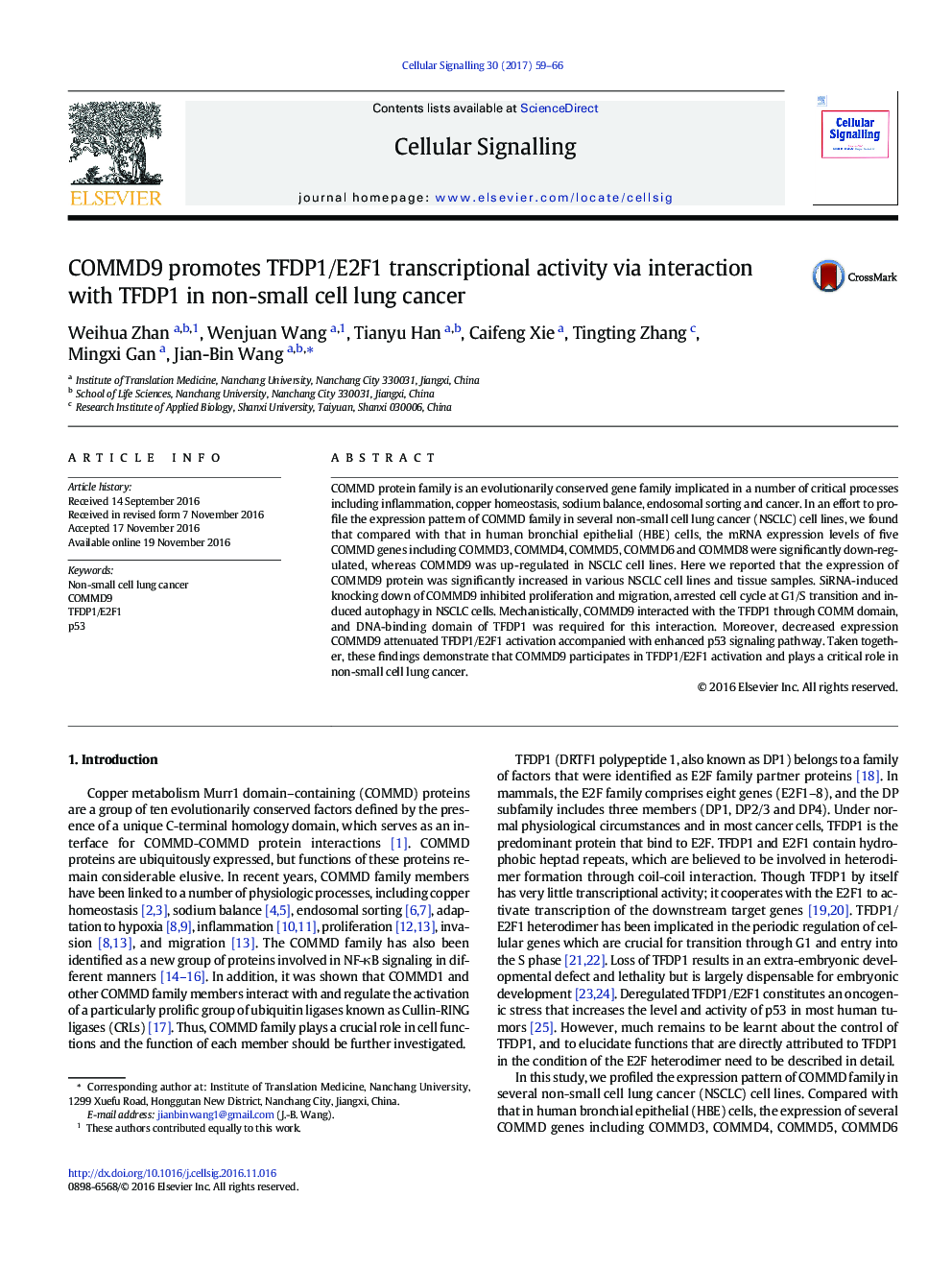| Article ID | Journal | Published Year | Pages | File Type |
|---|---|---|---|---|
| 5509434 | Cellular Signalling | 2017 | 8 Pages |
Abstract
COMMD protein family is an evolutionarily conserved gene family implicated in a number of critical processes including inflammation, copper homeostasis, sodium balance, endosomal sorting and cancer. In an effort to profile the expression pattern of COMMD family in several non-small cell lung cancer (NSCLC) cell lines, we found that compared with that in human bronchial epithelial (HBE) cells, the mRNA expression levels of five COMMD genes including COMMD3, COMMD4, COMMD5, COMMD6 and COMMD8 were significantly down-regulated, whereas COMMD9 was up-regulated in NSCLC cell lines. Here we reported that the expression of COMMD9 protein was significantly increased in various NSCLC cell lines and tissue samples. SiRNA-induced knocking down of COMMD9 inhibited proliferation and migration, arrested cell cycle at G1/S transition and induced autophagy in NSCLC cells. Mechanistically, COMMD9 interacted with the TFDP1 through COMM domain, and DNA-binding domain of TFDP1 was required for this interaction. Moreover, decreased expression COMMD9 attenuated TFDP1/E2F1 activation accompanied with enhanced p53 signaling pathway. Taken together, these findings demonstrate that COMMD9 participates in TFDP1/E2F1 activation and plays a critical role in non-small cell lung cancer.
Keywords
Related Topics
Life Sciences
Biochemistry, Genetics and Molecular Biology
Biochemistry
Authors
Weihua Zhan, Wenjuan Wang, Tianyu Han, Caifeng Xie, Tingting Zhang, Mingxi Gan, Jian-Bin Wang,
